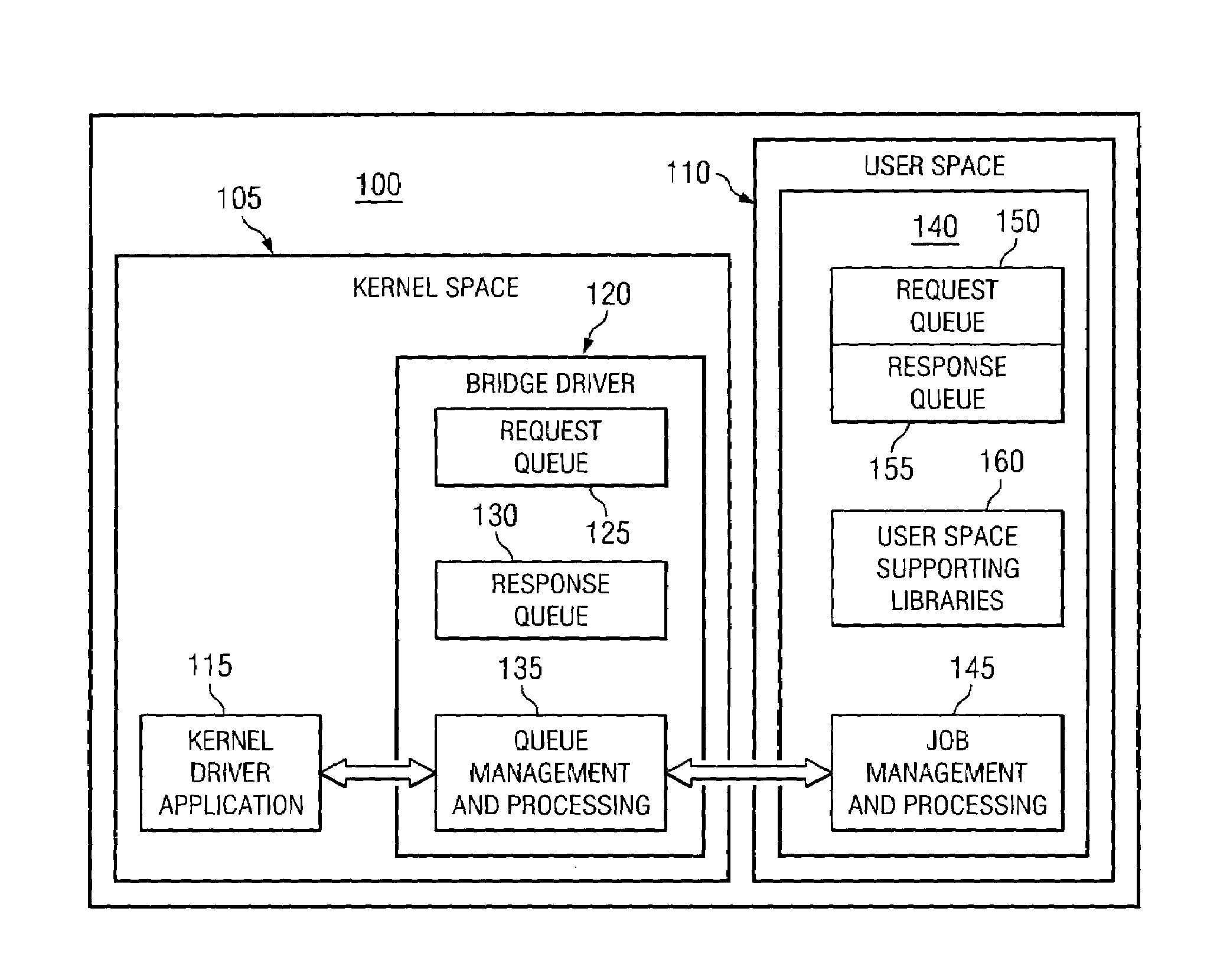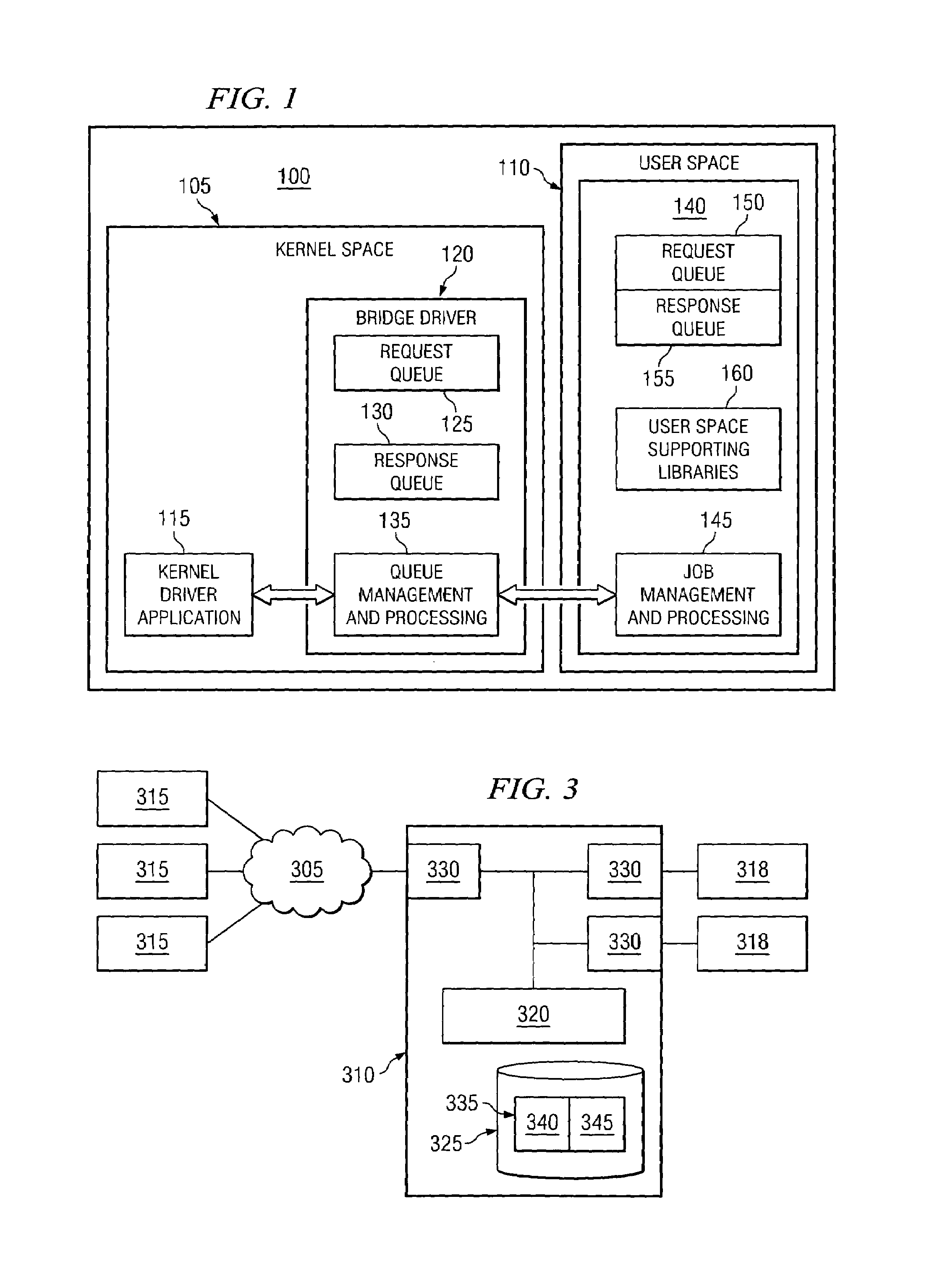System and method of supporting kernel functionality
a kernel and functionality technology, applied in the field of kernel functionality support, can solve the problems of limited hardware call service, limited access to computer resources, and limited interaction between kernels and user space applications, and achieve the effects of increasing system stability, and reducing the cost of hardware maintenan
- Summary
- Abstract
- Description
- Claims
- Application Information
AI Technical Summary
Benefits of technology
Problems solved by technology
Method used
Image
Examples
Embodiment Construction
[0020]Preferred embodiments of the invention are illustrated in the FIGURES, like numerals being used to refer to like and corresponding parts of the various drawings.
[0021]Embodiments of the present invention provide a system and method for extending the functionality of the kernel layer through user space applications. One embodiment can include a kernel that can pass a request for a process to a user space application. The user space application can carry out the request and send the result of the process to the kernel in a format usable by the kernel for further processing. In this manner, user space applications can be leveraged for performing complex calculations or other processes, while the remainder of the processing can occur at the typically more efficient kernel level.
[0022]In one embodiment of the present invention, each kernel capable of passing requests can include a kernel driver application that is capable of initiating requests and a bridge driver that is capable o...
PUM
 Login to View More
Login to View More Abstract
Description
Claims
Application Information
 Login to View More
Login to View More - R&D
- Intellectual Property
- Life Sciences
- Materials
- Tech Scout
- Unparalleled Data Quality
- Higher Quality Content
- 60% Fewer Hallucinations
Browse by: Latest US Patents, China's latest patents, Technical Efficacy Thesaurus, Application Domain, Technology Topic, Popular Technical Reports.
© 2025 PatSnap. All rights reserved.Legal|Privacy policy|Modern Slavery Act Transparency Statement|Sitemap|About US| Contact US: help@patsnap.com



